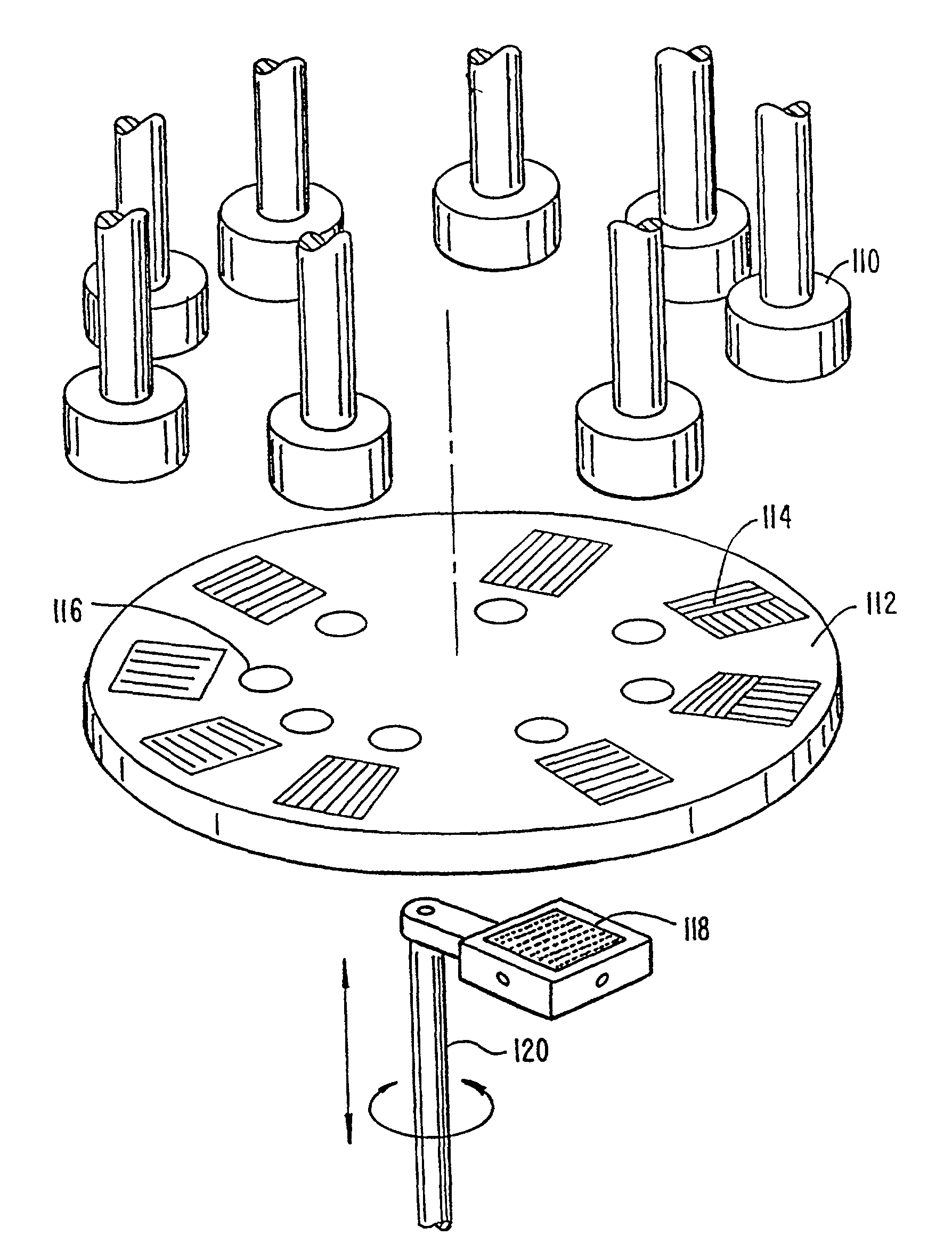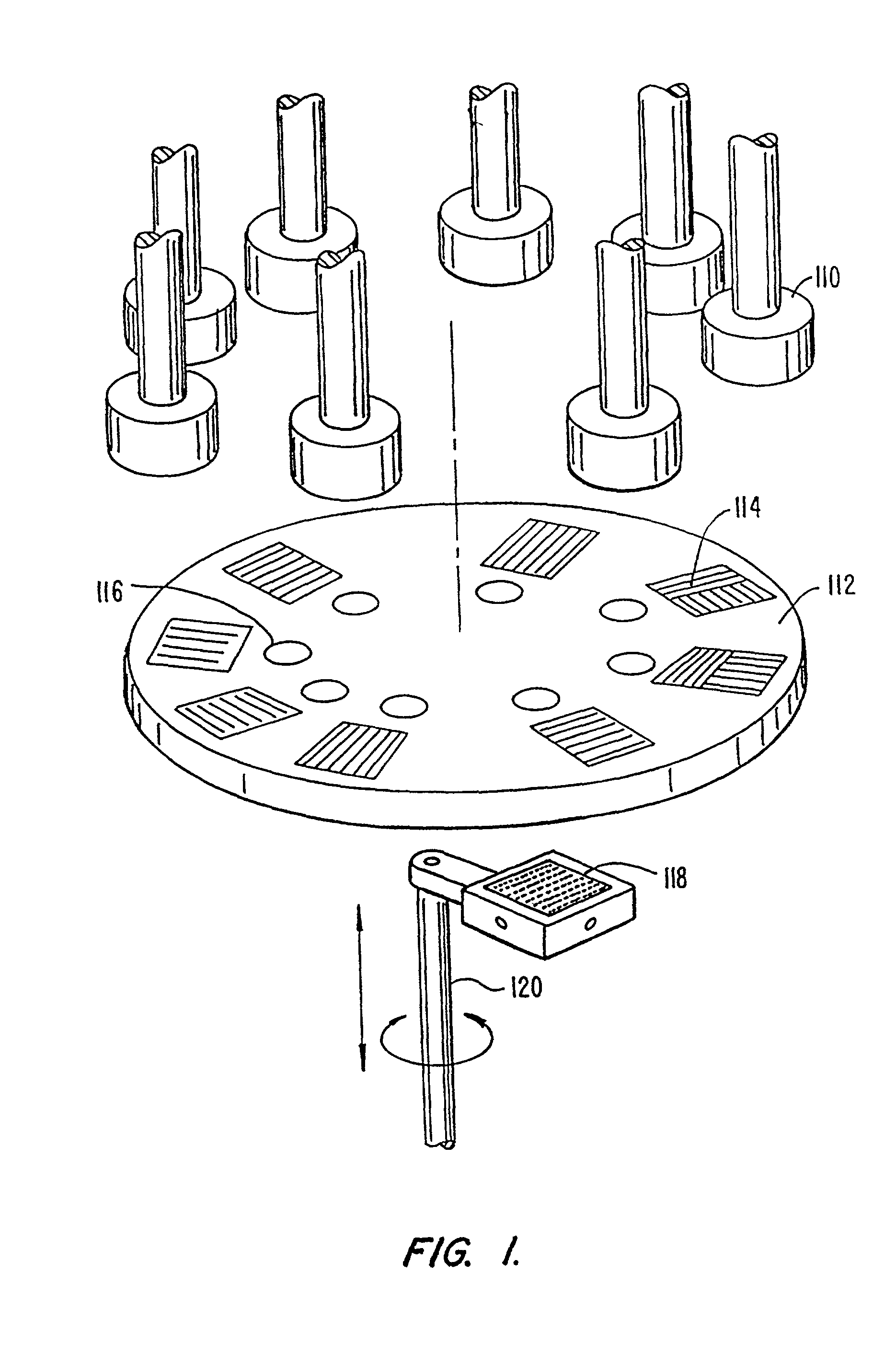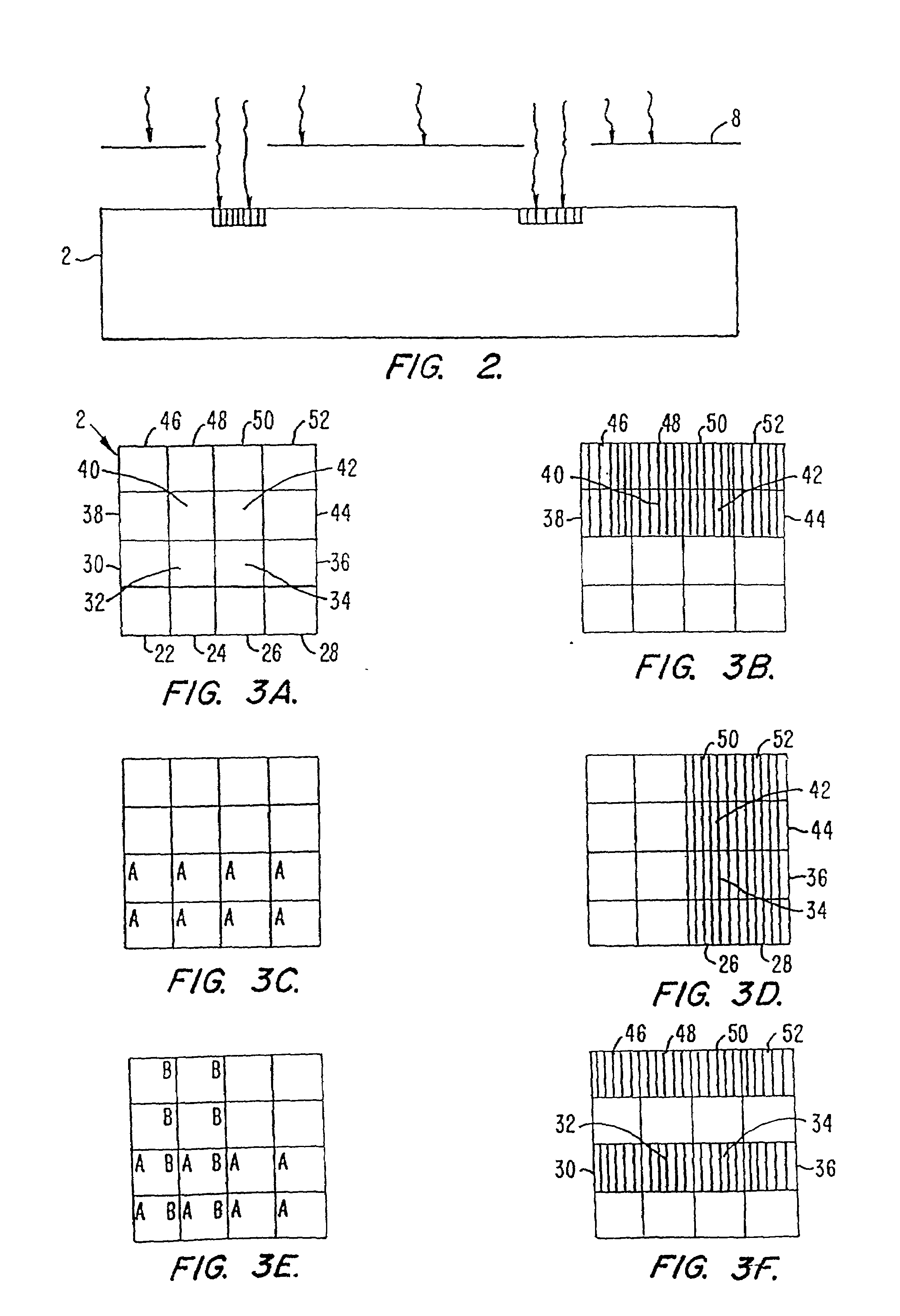Combinatorial synthesis and screening of non-biological polymers
a polymer and polymer technology, applied in the field of combinatorial synthesis and screening of non-biological polymers, can solve the problems of difficult to predict a priori the physical properties of a particular three-dimensional structure, inability to prepare many inorganic and organic compounds, and sequential solid phase synthesis techniques
- Summary
- Abstract
- Description
- Claims
- Application Information
AI Technical Summary
Benefits of technology
Problems solved by technology
Method used
Image
Examples
Embodiment Construction
CONTENTS
[0029]I. Glossary[0030]II. General Overview[0031]III. Isolation of Reaction Regions on The Substrate[0032]IV. Methods For Delivery Of Reactant Components[0033]A. Delivery Using Thin-Film Deposition Techniques[0034]B. Delivery Using A Dispenser[0035]V. Moving The Dispenser With Respect To The Substrate[0036]VI. Synthetic Routes For Reacting The Array Of Components[0037]VII. Methods For Screening An Array Of Materials[0038]VIII. Alternative Embodiments[0039]IX. Examples[0040]A. Synthesis of An Array of Copper Oxide Thin-Film Materials[0041]B. Synthesis of An Array of 16 Different Organic Polymers[0042]C. Synthesis of An Array of Different Zeolites[0043]D. Synthesis of An Array of Copper Oxide Compounds Using Spraying Deposition Techniques[0044]E. Synthesis of An Array of Manganese Oxide Thin-film Materials[0045]X. Conclusion
I. Glossary
[0046]The following terms are intended to have the following general meanings as they are used herein.[0047]1. Substrate: A material having a ri...
PUM
| Property | Measurement | Unit |
|---|---|---|
| area | aaaaa | aaaaa |
| area | aaaaa | aaaaa |
| area | aaaaa | aaaaa |
Abstract
Description
Claims
Application Information
 Login to View More
Login to View More - R&D
- Intellectual Property
- Life Sciences
- Materials
- Tech Scout
- Unparalleled Data Quality
- Higher Quality Content
- 60% Fewer Hallucinations
Browse by: Latest US Patents, China's latest patents, Technical Efficacy Thesaurus, Application Domain, Technology Topic, Popular Technical Reports.
© 2025 PatSnap. All rights reserved.Legal|Privacy policy|Modern Slavery Act Transparency Statement|Sitemap|About US| Contact US: help@patsnap.com



